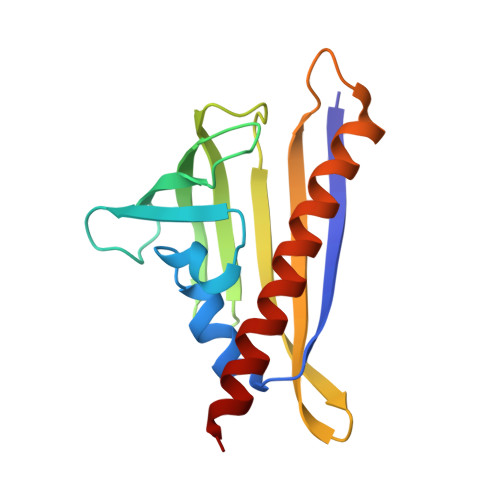Dynamic control of plant water use using designed ABA receptor agonists.
Vaidya, A.S., Helander, J.D.M., Peterson, F.C., Elzinga, D., Dejonghe, W., Kaundal, A., Park, S.Y., Xing, Z., Mega, R., Takeuchi, J., Khanderahoo, B., Bishay, S., Volkman, B.F., Todoroki, Y., Okamoto, M., Cutler, S.R.(2019) Science 366
- PubMed: 31649167
- DOI: https://doi.org/10.1126/science.aaw8848
- Primary Citation of Related Structures:
6NWC - PubMed Abstract:
Drought causes crop losses worldwide, and its impact is expected to increase as the world warms. This has motivated the development of small-molecule tools for mitigating the effects of drought on agriculture. We show here that current leads are limited by poor bioactivity in wheat, a widely grown staple crop, and in tomato. To address this limitation, we combined virtual screening, x-ray crystallography, and structure-guided design to develop opabactin (OP), an abscisic acid (ABA) mimic with up to an approximately sevenfold increase in receptor affinity relative to ABA and up to 10-fold greater activity in vivo. Studies in Arabidopsis thaliana reveal a role of the type III receptor PYRABACTIN RESISTANCE-LIKE 2 for the antitranspirant efficacy of OP. Thus, virtual screening and structure-guided optimization yielded newly discovered agonists for manipulating crop abiotic stress tolerance and water use.
- Institute for Integrative Genome Biology, University of California, Riverside, Riverside, CA 92521, USA.
Organizational Affiliation:

















